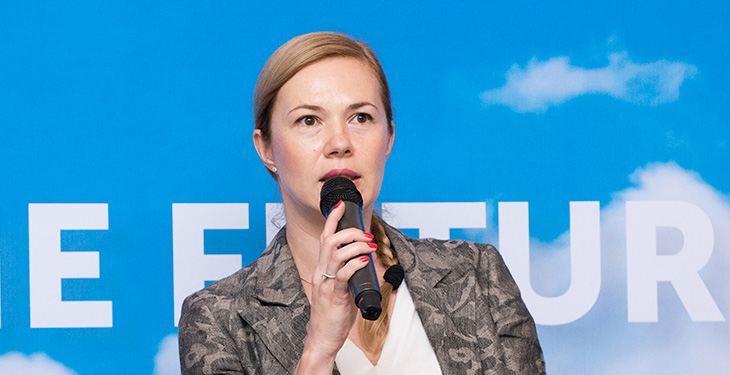ING supports its customers in migrating towards a circular economy by providing innovative green products for projects and initiatives for sustainable development, said Oana Mogoi, Sector Head of Utilities & Natural Resources ING Bank, at the 2019 Energy Strategy Summit, an event organized by energynomics.ro. The green financing market reached $ 250 billion in 2018, compared to just $ 5 billion in 2012, and ING contributed $ 30 billion globally.
Sustainable finance has passed from the concept stage to a growing phenomenon. In this regard, the 2015 Paris Agreement marked an important step in the development of the global economy.
“The fact that 170 countries have ratified this agreement gives a strong signal on the transition to a low-carbon economy and world. However, this implies a significant investment effort of approximately € 180 billion annually, according to the European Commission’s calculations, for increasing energy efficiency and for production and transmission of energy produced from renewable sources. It is clear that the volume of these investments is far below the financing capacity of the public systems, even in highly developed countries. As a result, the role of the private sector and especially of the financial sector becomes very important”, said Oana Mogoi.
In this respect, the EC has set up a European High Level Group of Sustainable Finance to promote the idea of sustainable financing. The Group’s report shows by means of a set of recommendations how to integrate sustainability into the EU financing policy increasing the contribution of the financial system, by increasing its stability, as well as by incorporating the idea of social and environmental governance into financing decisions.
“The conclusion of the study was that, in order to achieve the targets of the Paris Agreement, it is necessary to fully transform the financial system, its culture and its interests.”
The action plan suggested by the report includes the need of a taxonomy of the sustainable activities and of imposing financing standards for green financing products. At the same time, capital adequacy studies for financial and insurance institutions need to take into account the environmental and climate change exposures, while the risks associated with them need to be presented in as transparent a way as possible.
“We are talking about a paradigm shift – until recently the cost of pollution was sustained by society and the environment. Many companies in Romania have already incorporated in their strategy the idea of sustainable development with clear key performance indicators assumed at management level. The EC study shows that such companies also have better financial performance, lower credit risk and more performant management. We also see initiatives at government level, which is encouraging – the Department for Sustainable Development was set up in 2017”, Oana Mogoi said.
ING aims to align 600 billion euros of its portfolio to Paris Convention targets
ING was one of the first banks in the world to incorporate the idea of sustainable financing into its own strategy. “This is how the Terra project was born – through this we intend to align 600 billion euros from our total 900 billion euros portfolio to the Paris Agreement targets. It is clear that this will not happen overnight, it is a gradual process, but we are confident that as long as there is a strategy and clearly assumed objectives, we will succeed.”
ING also pursues its own energy neutrality. “We will procure 100% renewable electricity by 2020 for all buildings we operate worldwide (as part of the RE100 initiative), reduce our CO₂ emissions by 50%, our global residual waste by 20% and our water footprint by 20%, all by 2020 (base year 2014)”. At the same time, by 2022, it is intended to double the financing for companies and organizations that have sustainable initiatives and projects with a positive impact on society and the environment.
“Things started quite early in ING, since 1996, when the first sustainability study was created, and in 2010 the first targets were set. In 2015, the first green bonds were issued – for which a precise purpose for using the attracted funds is defined, strictly linked to the idea of sustainability, an external sustainability rating is provided and the use of proceeds is monitored. There are also green credits, with the same purpose as green bonds and the same use of proceeds monitoring. I would also like to mention the sustainability improvement loans, for which a set of key performance indicators is set, and if they are achieved, a discount on the cost of the financing is granted, and if not, a penalty is charged. These are the products we are currently offering for sustainable finance, being our way and our commitment to support our customers and the economy in the energy transition and migration to a circular economy and a low carbon emissions world”, Oana Mogoi said.

